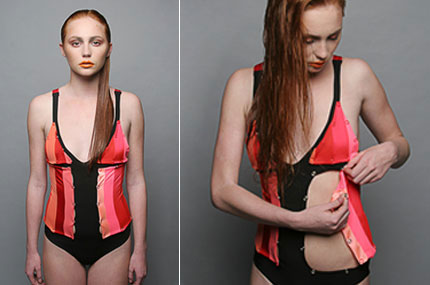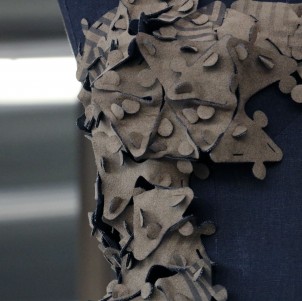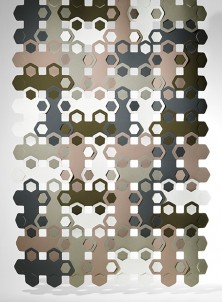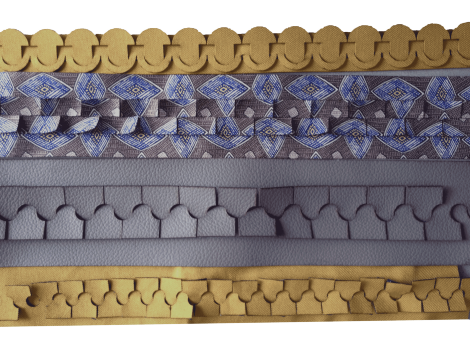COLLECTIVE COLLECTION
RESEARCH
COLLECTIVE
COLLECTION
Iris Heerkens & Inouschka de Nooijer
The Collective Collection is an open design project. We presume that open design gives consumers an opportunity to participate in design and making process. The concept of Open Design changes the relation between consumers and designer. The consumer becomes the producer. We wanted to emphasize this in our concept.
At first we had the idea to make a T-shirt where people can choose your neckline and the kind of sleeves. But this dual choice didn’t seem ‘open’ to us. So we decided that a much greater variation. We think about clothing parts and how you can sew them together. Quickly it became clear that we had to produce a fashion collection that will be feasible for everyone. It should be easy to design and make so that it would be possible for everyone to create its own collection.
We create a fashion collection that consists of different components. These components, for example a sleeve, have connections which connect to another component. Each component has got the same connections, so you can connect them to other parts. This allows the producer/consumer to vary endlessly; from a long dress, to a T-shirt, to a cocktail dress. By choosing different kinds of fabrics, you can also change constantly the look from the garments.
Our design is open, in order that anybody can make something and change it again. It offers the possibility to change the connections of the pattern and to upload again. Anybody can influence their own makings by using different cloths and different connections.





Soepboer & Stooker
FABLAB vs. Cinno Costa Rica
FABLAB - Ece Tankal & Ilkim
Open design
Fioen van Balgooi and Berber Soepboer
Martijn van Strien - The post Couture collection















Our concept is inspired by ‘The Post-couture collective’. This is the first fashion label grounded in the maker movement and the third industrial revolution. They introduce an alternative fashion system using new manufacturing methods, which design and produce clothing in a sustainable and affordable way.
The fashion designs by Martijn van Strien have got connections at the ends of components. Our collection is also based on this principle of making connections.
Our collection tries to complement this collection. Where Van Strien fabricates clothing out of one piece, we try to create clothing out of different parts so that different parts made from different cloths can be combined. This allows a user to create more outfits, using less clothing.
We mentioned before that Martijn van Strien was a great inspiration. Another big source of inspiration was a workshop with Vera de Pont we talked about creating public collections and clothes and we arrived quite quickly on the concept of clothing parts. Vera Pont introduced us a connection which is used in leather. This was the vantage point for research about all possible connections which could be created by using a laser cutter. What is being made, by whom, and why?
This inspired us to further investigate the possibilities of connections in clothes and making items of clothing which you can assemble garments.
We have begun to inventory existing modular designs, then we tried to adjust and complement them, and in the last stage we tried to design new connections. Then we start testing the newly created connections. The connection needs to be esthetical; also different kinds of fabrics were tested by firmness and flexibility. We want the clothing to be easy to wear. In the end we chose the connection which can be associated with the principle of a zipper, because it is a strong connection and visually appealing.
Because we wanted the connections to be visible, the connections need to stand out, but also be calm and modest. The connections also needed to be compatible with different kinds of pattern or plain fabrics. The right-angled zipper connection becomes the best solution for our needs.
SKETCH
SKETCH
RESEARCH
RESEARCH
CONCEPT
SKETCH
CONNECTION
MODULAR
CLOTHES
MODULAR
CLOTHES
CONNECTION
MODULAR
CLOTHES
RESEARCH
SKETCH
CONCEPT
TEST
scroll
TEST
MODULAR
CLOTHES
CONCEPT
CONNECTION
RESEARCH
SKETCH
PROTO
scroll
scroll
scroll
TEST
PROTO
CONNECTION
MODULAR
CLOTHES
CONCEPT
RESEARCH
SKETCH
FABRICS
In our model we used loose fitting fabrics. Although synthetic fabrics are stronger, we used thinner fabrics and made it more firm by using fusible interfacing. Because this is a very laborious task, and if our concept is evolve any further, we should choose and advise synthetic fabrics instead.
CONCEPT
FABRICS
PROTO
TEST
CONNECTION
MODULAR
CLOTHES
RESEARCH
CONCEPT
SKETCH
STATEMENT
The fashion Industry.
The fashion industry has drastically changed over the years. From a spring/summer and autumn/winter season we went to almost 52, because of the fast fashion industry. We buy every year over 80 billion pieces of clothing and we throw these easily away because of the low pricing. The deflation of fashion has to do with the outsourcing of labour to china and Bangladesh.
Through open design designers response to this development, because open design gives the consumer the possibility to be involved in the making proces. Indirectly the sweatshops will have less pressure and it is a statement to the fashion industry.
With our project we want to expose another subject of this problem. Because of the high consumption there are a lot of materials being used and easily throw away. By making te clothing modular you have more options of styles and combination but with less materials.
By making your own clothes, you can personalize them, you value them more and don’t throw them away that easy.
A big inspiration for this statement comes from the documentary ‘True cost’ directed by Andrew Morgan. In his documentary he reveals the true story behind the fashion industry and who is really paying the price for our low priced clothing. Big companies are forcing the producers in Bangladesh to produce for the lowest price, other wise they will go to another factory.
By taking the labour for your responsibility, it will take of the pressure for the workers. Now is the problem that nog everyone has acces or experience working with a sewiwgmachine. Therefore we are using 21st century techniques that are very accessible in the western world; the lasercutter in fablabs.
Iris Heerkens.
Open Design vs. Authority - Paul Verhaeghe.
The most interesting part from Open design for me is that the designers share the design with everybody and make instruction for consumers how they can make the products by themselves. It changes the relationship between consumers and designers. The consumer becomes the designer.
Before the practice I read the book Authority from Paul Verhaeghe. In this book he questions the way authority functions. Why authority has so little value these days and what are the possible alternatives.
He looks for new meanings for authority and finds them in groups He writes about flat organisation and how a group can function as the new authority. He also said that there would always a hierarchy, but who is on top of the hierarchy depends on the skills. It fluctuates and that is why it's functions. Nobody has the power on his own but there is the social audit.
For me Open Design is an example of the new authority that Verhaeghe describes. The way in which the designers functions as a collective and because of the fact that they share their design with everybody, fits the way how the new authority could function.
Inouschka de Nooijer




Because we wanted the connections to be visible, the connections need to stand out, but also be calm and modest. The connections also needed to be compatible with different kinds of pattern or plain fabrics. The right-angled zipper connection becomes the best solution for our needs.
While making the clothes we initially used a sewing machine to connect the components with the connections. We stopped doing this rather soon, because using sewing machines undermines the concept. We wanted our clothes to be able to be easily made, but without any sewing. Eventually our design became a template which when used with the right materials can be laser cutter.
The patterns of the collection had been alternated several times as well. It was only question of finding the right fit. Eventually we chose a straight model with the same neckline on the front and on the back.